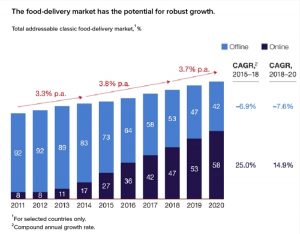— May 13, 2019
When a flower doesn’t bloom, fix the environment in which it grows, not the flower.
A friend sent me this quote recently, and it made me think about the difference between how we usually deal with issues surrounding employee productivity and how nature would teach us to handle the problem. Unfortunately, our usual strategy is to “fix the person.” For example:
- We use tactics to get the employee to be more productive or competent.
- We structure their work to hold them more accountable.
- We initiate more control to get them to do what we want.
- We supervise them more closely through micro management.
And if none of these strategies work, we put them on a performance improvement plan that includes all of the above. And if THAT doesn’t work, we show them the door.
The danger of default thinking where the organization is an object
While these strategies are familiar, we may not recognize the background assumptions that are driving their use. When we see our organization as an object, we see the people in them as parts of the larger whole. In this “parts mentality” if there is a problem with an employee, we see the worker as the problem. Consequently our focus is on fixing the broken part by holding them more accountable or by increasing their skills or competence.
This default thinking measures the primary value of a staff member by their ability to function in their position. If the function is not meeting expectations, this person needs to be removed and replaced with another worker who can perform. That is how we respond to a broken part in a machine, and is not necessarily a good choice for motivating human beings and boosting employee productivity.
The danger in this default is that our organizations aren’t objects, they are living entities. The strategy for working with a person who isn’t performing must come from a living system framework.
Going back to our original quote, the flower that doesn’t bloom is embedded in a larger environment. The relationship between the flower and its environment is interdependent. Therefore, diagnosing the problem with the flower can not be understood from a parts mentality. Instead we need to see how the flower is interacting with its larger environment and what might be hindering its ability to thrive. We must learn to deal with employee productivity in the same way as the flower if the organization is to thrive.
Here are strategies that are effective is we see the problem employee within a living system.
- Identify the necessary nutrients. Flowers don’t bloom if they don’t receive the right nutrients. In an organization, nutrients for employees are knowledge, skills, and the right support to help them learn how to perform the job, and continue to help them learn and grow in the position.
- Ensure a fit with the environment. Flowers don’t thrive if the soil is not conducive to their particular needs. For example, if a plant likes sandy soil and we plant it in rich loam, the plant won’t thrive. Within an organization we certainly hope to find the right position for a person that’s a good fit with their skills. It’s important to realize that sometimes the employee is not in the position that allows them to bring their highest value to the organization.
- Consider whether the environment is hostile. Sometimes flowers don’t bloom because they are being crowded out by other plants, or they have become root bound and need to be split apart and replanted with space to grow. Organizations can have healthy or hostile workplaces. If we approached employee productivity from this framework, we would look to the work environment to see if it needs to be transformed so staff members can perform better.
Identifying the conditions that are conducive helping boost employee productivity
A living system is a networked, dynamic, and interdependent environment. We can’t solve an employee performance issue without looking at the larger environment of the organizational systems. Understanding how to create the right conditions is imperative to building stronger productivity, both individually and as a team. A living system would look to several areas to build a stronger environment, including but not limited to:
- The immediate supervisor
- Current team dynamics
- Clarity of roles and responsibilities,
- Reward systems
- Quality of relationships
- Level of shared higher purpose
- Feedback loops
- The knowledge and skill the person has or needs to thrive.
Reviewing any or all of these conditions every time there is a “problem” helps expand our thinking to include more than the individual who isn’t performing. In fact, we can now look to the environment of the organization to help us understand the conditions that are conducive or hindering an employee’s capacity to thrive.
Stating the obvious
Employee productivity is an organizational need. If we were serious about productivity, we can start by letting go of default thinking that an organization was an object and that need to focus on individual employees to fix productivity. Instead we would replace that thinking with seeing employee productivity from a living system mindset.
The living system mindset helps us to ask different questions and develop more effective strategies that influence the culture of the organization. As a result, all of the “nutrients” within our environment – processes, procedures, policies, values, guiding principles, purpose, relationships, and support – become aligned to help us reach our productivity goals every day.
A version of this post originally appeared here.
Business & Finance Articles on Business 2 Community
(63)







